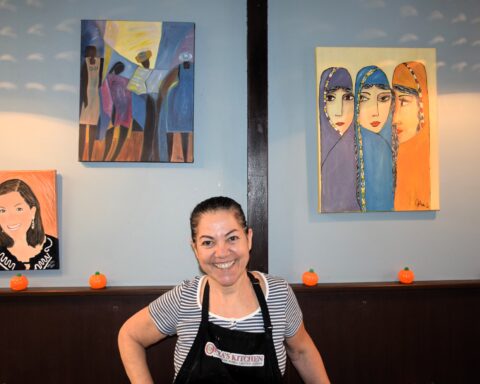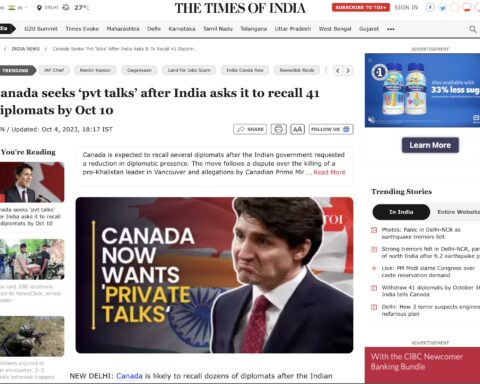Why is it that some new Canadian communities appear to achieve prominence, stature and wealth in the fabric of the national community – more readily than others?
Research indicates that how well immigrant communities grow and emerge is dependent upon a variety of factors, including: higher education levels, a willingness to patronize/economically support their own communities and the length of time or number of generations which a group has been in Canada.
Educational Attainment
There is a growing body of evidence that typically educational attainment levels in Canada are higher among the children of some immigrant and ethno-cultural communities: for example, Chinese, Iranian, Jewish, South Asian and some East Asian people.
It’s indisputable that communities that keep education as a number one priority provide succeeding generations with an economic and social head start.
Having worked on the federal stay in school campaign in the 1990s, I was privy to the facts about the significant difference in lifelong earnings between those who graduate high school, or higher education, and those who don’t. It’s indisputable that communities that keep education as a number one priority provide succeeding generations with an economic and social head start.
Economic Self-empowerment
There was a landmark social study conducted in Miami a few years ago reported on PBS’s Tony Brown’s Journal. It showed that the ethnic communities that had by and large prospered and “emerged” fastest – Jews, Cubans, Nicaraguans – were all characterized by one economic fact: the members of all three groups on average spent more than 80 cents of every disposable dollar purchasing goods and services from businesses owned by people of their own ethnic group. By contrast, the poorest communities – African-Americans and Haitians – were found to spend significantly less within their own ethnic communities, and would sometimes even avoid that practice. The point of the study is: a community can prosper when it economically empowers itself.
Longevity & Social Engagement
Clearly, some communities have woven themselves into the fabric of Canada by virtue of their longevity. Recent immigrant communities may, out of necessity, be more concerned with subsistence than they are with making a broad social contribution. It may take a generation or two before a community emerges economically and politically. However, longevity in Canada is probably the least important determinant of whether a community will grow and prosper.
On St. Patrick’s Day – though it wasn’t always this way – everyone purports to be Irish. Those of Irish heritage willingly tolerate that from the rest of us. However, some communities choose to keep their own counsel and live in closely-knit enclaves – for now.
Not all communities are equally willing to share their heritage and culture with the wider populace. On St. Patrick’s Day – though it wasn’t always this way – everyone purports to be Irish. Those of Irish heritage willingly tolerate that from the rest of us. However, some communities choose to keep their own counsel and live in closely-knit enclaves – for now.
Political Involvement
All of which brings me to the matter of political representation, because it is the most obvious measure of the engagement and empowerment of any community.
Some communities punch far above their weight. For example, if we use political representation as one yardstick, Canada has nearly 500,000 Sikhs (about one and a half per cent) and yet with six MPs, nearly two per cent representation in Parliament. According to the World Sikh Organization of Canada, there are currently 17 elected Sikhs at the provincial and federal levels.
Meanwhile, the close to 1.2 million Muslims in Canada, are vastly under-represented and currently can count amongst themselves only three elected members at the provincial and federal levels along with the Mayor of Calgary.
“Sikhs have been more successful because they tend to concentrate geographically. They are more cohesive as compared to others, especially Muslims. This is not to say there are no internal differences between them.” – Mohammed Ayub Khan
Mohammed Ayub Khan, PhD candidate in the department of political science at McMaster University says Muslims must contend with an immense national linguistic diversity and a lack of effective electoral education in the community. As a result, voting percentages continue to remain low among Muslims.
“Sikhs have been more successful because they tend to concentrate geographically,” Khan says. “They are more cohesive as compared to others, especially Muslims. This is not to say there are no internal differences between them.”
Khan goes on to add that this is exacerbated by an absence of professional media, which can highlight and discuss what the issues are within the Muslim faith community. He also points to negative attitudes, if not outright hostility, from the larger population. He says that while Sikhs come second in terms of unfavourable attitudes, they are able to overcome this due to their geographic concentration.
When a community embraces educational attainment, economic self-empowerment, and to a lesser degree, social engagement with the broad mosaic, it can indeed give itself appropriate representation and a prominent voice in the life of the nation.
Richard M. Landau has been responsible for adjudicating disputes and enforcing a television network code of ethics in a religious broadcasting setting since 1992. He is a graduate of Carleton University and the University of Ottawa. A leader in interfaith dialogue, Landau has consulted with the UK Home Office, and the White House Office of Community and Faith-Based Initiatives. He works closely with leadership in all of the major world religions. He is author of What the World Needs to Know about Interfaith Dialogue.





